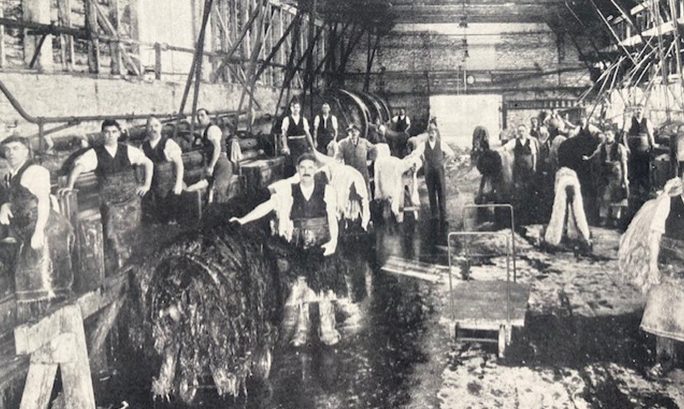Morlands and Baily’s were vital and successful businesses in Glastonbury. Both processed raw sheepskins and manufactured sheepskin, leather and suede goods, but each company had its own character. For more than a century they provided stable, well paid work. Beyond this, the provision of social, healthcare and educational opportunities for their employees meant that they made a significant contribution to the communities of Glastonbury, Street and neighbouring villages.
This exhibition, funded by Historic England, celebrates the experiences of the people who worked at Morlands and Baily’s. Many local people have memories of working here or family connections with the sheepskin industry. Their voices tell the stories, their pictures offer a glimpse of what life was like at Morlands and Baily’s and their objects show the skill and craftsmanship which were at the heart of both companies.

Photo: Morlands Archive
After the closure of Morlands in 1982 and Baily’s in 1992, the site was allowed to become derelict. In 2009 some of the buildings were saved and these have been transformed into the Red Brick Building, an organisation which champions community, creativity and sustainability.
The next phase of the Red Brick Building is renovating the third derelict building as part of Glastonbury’s Town Deal. The Life Factory will provide maker’s spaces, as well as providing a dedicated area for youth, music, broadcasting rooms and a community canteen. Beckery Construction Company, a subsidiary of Red Brick Building, has been set up to deliver the build and working in partnership with Train4All are improving education and skills by delivering the project with young apprentices and local people.
We are also excited to be part of the Glastonbury Food and Regenerative Farming project, also under the Red Brick Building. Delivered on Bridie’s Farm, it will be a community growing project focussing on education, connecting to nature and agroecological practices. It’s a really exciting time of development and one that will further benefit the local community for future generations.

